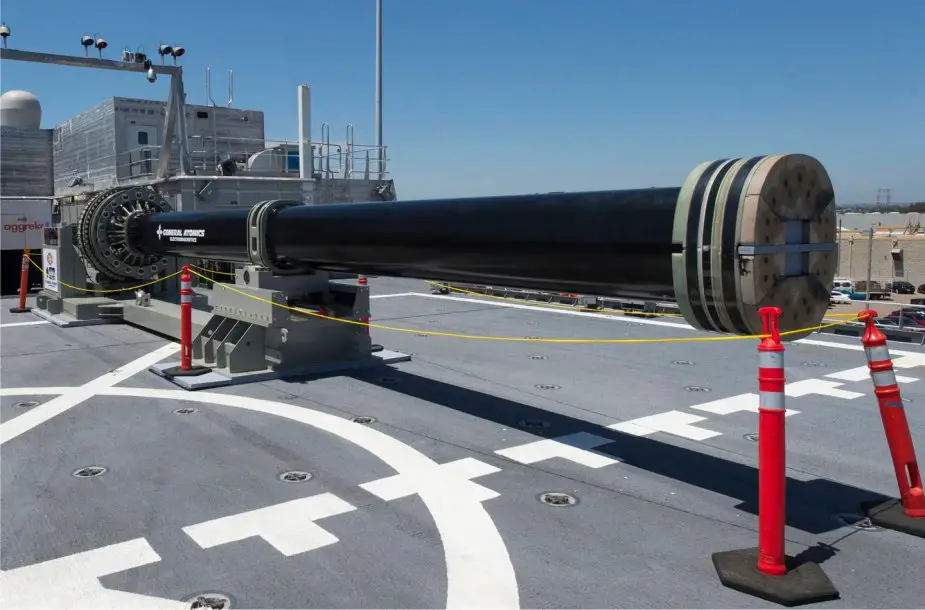Breaking news
French Defence Procurement Agency unveils naval electromagnetic railgun project.
According to information published by Opex360 on July 19, 2023, the Directorate General of Armament has unveiled a groundbreaking electromagnetic cannon project for naval ships.
Follow Navy Recognition on Google News at this link
 One of a pair of electromagnetic railgun prototypes is exhibited on the USS Millinocket, a high-speed joint vessel, while it's anchored at the Naval Base San Diego. (Picture source: US DoD)
One of a pair of electromagnetic railgun prototypes is exhibited on the USS Millinocket, a high-speed joint vessel, while it's anchored at the Naval Base San Diego. (Picture source: US DoD)
This innovative weapon, designed to arm vessels, has been developed by the Franco-German Research Institute of Saint-Louis (ISL) and funded by the Defense Innovation Agency (AID).
This electromagnetic cannon significantly surpasses conventional gunpowder artillery by offering a muzzle speed between 2 and 3 km/s, depending on the caliber of the weapon and the mass being propelled.
The military benefits of this disruptive technology are immense. The cannon facilitates ultra-long-range artillery that can extend beyond 200 kilometers, as well as enhanced surface combat due to improved penetration performances from the increased impact speeds.
The device is well-equipped for anti-aircraft and anti-missile defense, particularly against future hypersonic threats, thanks to reduced flight times. The ability to control the muzzle speed and firing rate results in multiple simultaneous impacts. Notably, the absence of gunpowder eliminates pyrotechnic risks.
The technical characteristics of this weapon are remarkable. The electromagnetic cannon propels projectiles using electric energy, removing the need for propellant powder and thus reducing vulnerability. It boasts a muzzle speed exceeding 3000 m/s, leading to increased ranges, shortened flight times, and augmented impact speeds.
Emmanuel Chiva, the head of DGA, shed light on this project. He explained that the cannon works by sending a projectile between two rails with a significant electric potential difference.
While the charge is non-explosive, it moves so quickly that it ionizes the atmosphere, leaving a trail of flames. The projectile can cover up to 600 kilometers. In a demonstration, a small rubber disc fired from the cannon with a force of 100,000 Gs was able to penetrate thick armor.
This fascinating weapon, capable of being developed by only a select few countries, including France, the United States, and Japan, presents significant future potential. The ISL has already created a prototype. The challenge lies in scaling the technology.
Different versions of the electromagnetic cannon can be considered, with some variations best suited for naval platforms that can store and release substantial amounts of energy almost instantly, as is typical for directed energy weapons such as lasers or electromagnetic systems.
For targets within a 30-kilometer range, the integration of the weapon onto a terrestrial platform, such as a truck, can be considered. Conventional, non-explosive shells could be used as ammunition, simplifying the manufacturing process.
This project is part of ongoing research at the ISL, aimed at preparing for the wars of the future with tomorrow's technology rather than that of today or yesterday. There is a desire to accelerate the roadmap in this area.



























